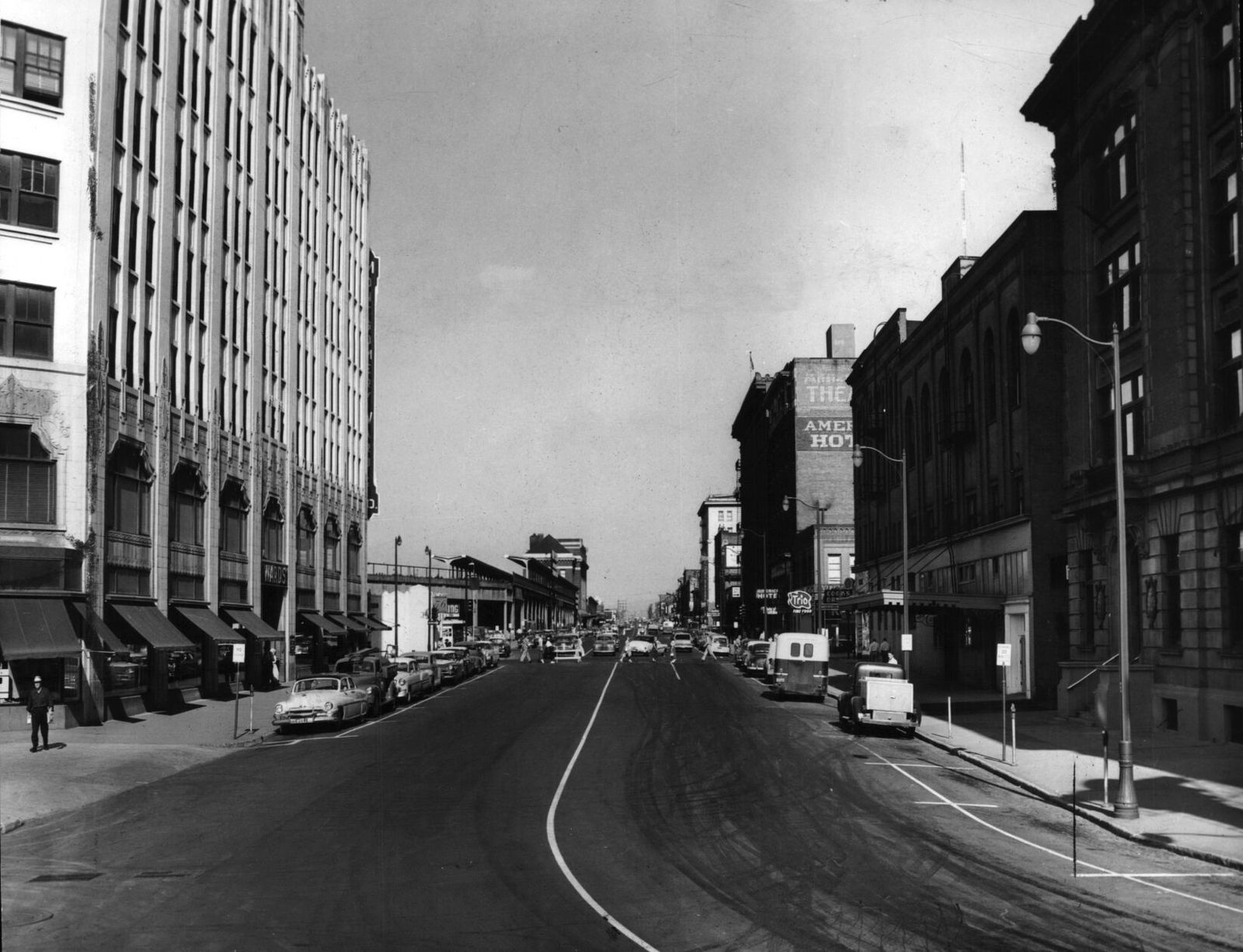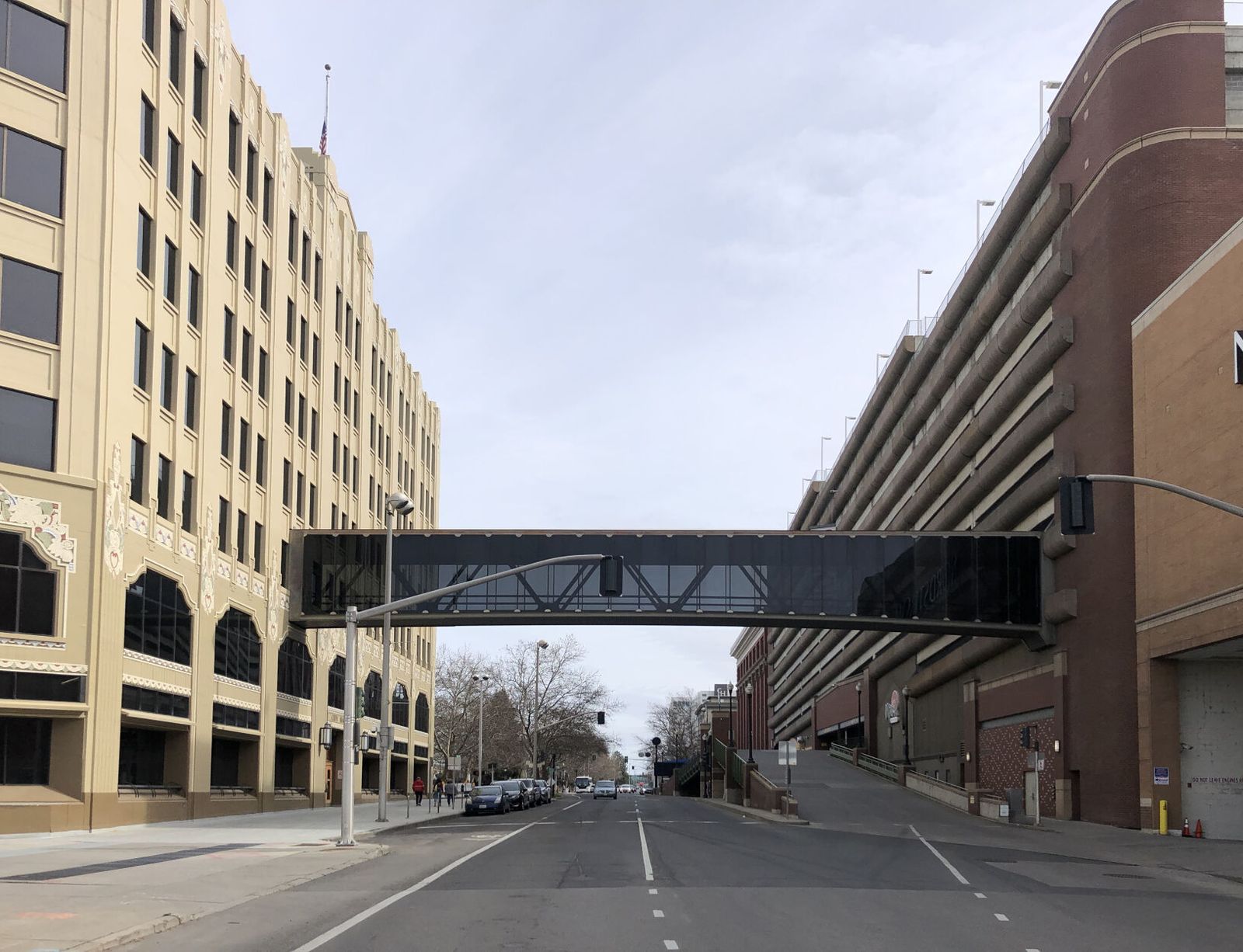
Then and Now: Trent Extension
The extension of Spokane Falls Boulevard from Lincoln Street to Monroe in 1968 created a complex five-way intersection at Monroe and Main, but it solved some congestion problems on busy traffic days in the downtown area. .
Section:Then & Now
Then and Now: Trent Extension
Today’s Spokane Falls Boulevard, formerly Trent Avenue, ended at the corner of Lincoln Street until it was extended west to Monroe Street in the 1960s. As automobile ownership increased after World War II, Spokane’s downtown streets became congested on days when there were parades, festivals and big shopping days. When events ended and stores closed, traffic could be snarled for hours as north-bound drivers maneuvered to the Post Street and Washington Street bridges to head home.
This problem frustrated Spokane traffic engineers for years, even as planners were adding to the issues by creating one-way couplets, especially made Main Avenue eastbound and Trent westbound only. Also on the minds of traffic engineers was the coming completion of Interstate 90, the thousands of cars and trucks flowing through the city and how to direct that traffic to the downtown streets and out again for shopping and business.
The extension of Trent Avenue to Monroe Street would add another way for cars to turn north from the downtown traffic snarl. The extension would have to cross a triangular parcel of land at Main Avenue and Monroe Street, which was owned by the Spokane Public Library and occupied by a service station, auto repair shop and a used car lot. In 1966, the city negotiated to buy the property.
Phase one of the Trent extension was to build the curved roadway around the downtown library and connect to a complex five-way intersection at Monroe. Complicating the intersection’s complex array of traffic lights and crosswalks was concern over foot traffic needing to cross busy Monroe Street from the recently completed federal building, completed the year before the Trent extension opened in 1968
A proposed second phase would have widened the south end of the Monroe Street Bridge to create a gentle sweeping turn directly onto the bridge deck but it was never built.
The intersection realignment required that the Abraham Lincoln memorial statue be moved. The statue had been erected with penny donations from school children in the 1920s. To make the five-way intersection align properly, the statue had to be moved from the center line of Main Avenue at Monroe Street to a slightly bigger traffic island north and slightly east of its original location.

